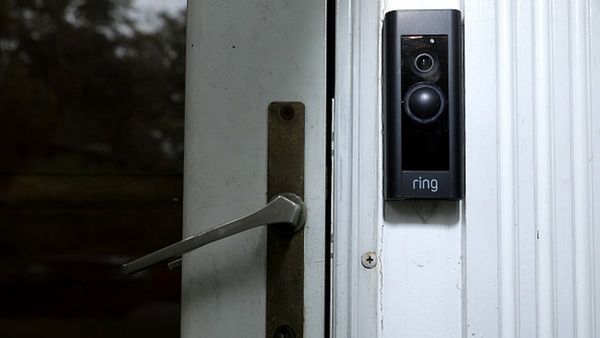
Russell Rowe spent almost two and a half years in Washington DC’s central detention facility, where rusty water flowed from taps in sinks that were connected to toilets. He remembers dawdling at the nurse’s station when it was time to take his meds, in hopes she’d give him an extra, tiny “portion” cup of water, the cup that often holds or accompanies pills.
“I was just in a state of constant dehydration,” he said. “My whole body felt different. I just didn’t feel well.”
For many of the 2 million people incarcerated across the United States, constant thirst is a hallmark of their time behind bars. So is having to drink disgusting and dangerous water.
Of the dozen years Broderick Hollins spent in (mostly) Illinois prisons and jails, he will never forget the tap water. Brown water at Stateville correctional center tasted like onions. It also sometimes came with clumps of rat hairs, flowing into residents’ cells via lead pipes.
“That’s where I got sick” with extreme lead poisoning, Hollins said of his six years at Stateville. It gave him migraines powerful enough to cause nosebleeds, deep-red eyes, and blurry vision; when he was released in 2020, he required painful chelation therapy injections to flush the lead from his body.
There’s nothing extraordinary about these men’s experiences. Across the country, formerly or currently incarcerated people recount choking down water that tastes and smells of sewage or sulfur, that emerges hot or discolored from taps or contains visible sediment. And they were forced to drink it because they couldn’t afford bottles from the commissary or because bottled water was not made available to them. “I knew I just needed to drink enough of this water, not necessarily to stay hydrated but to live,” said one source who requested anonymity. He spent time in a California jail surrounded by manure-producing dairy operations – a risk for bacterial infection. “The whole experience is survival.”
These personal stories are bolstered by research and investigations that have found toxic heavy metals, PFAS “forever chemicals”, the insecticide DDT, coal ash, bacteria and the radioactive gas radon in the water systems of many US corrections facilities. And they are evidence, said Columbia University environmental health scientist Anne Nigra, of a “devaluing of the lives of people who are incarcerated in these facilities”.
In theory, the federal Safe Drinking Water Act protects the right to clean water for everyone, including incarcerated people. Yet this and “other basic necessities are routinely denied” to people serving time in prisons and jails, wrote research analyst Leah Wang in a 2022 briefing for the non-profit Prison Policy Initiative (PPI). As she told the Guardian: “No one really was thinking about incarcerated people when they envisioned safe water for the people of the United States.”
Such lack of consideration means many prisons are built on polluted plots and/or have dangerously decaying infrastructure. At least 589 facilities across the country sit within three miles of a highly toxic Superfund site, close enough for contaminants to leach into carceral water systems. Others are constructed on abandoned industrial or military acreage, landfills or former mines. For example, Alabama is phasing out the William C Holman correctional facility in the southern part of the state due to eroding water and sewer pipes.
Although a US Department of Justice report found that the country’s 123 federal prisons need a combined $2bn in upgrades, the Bureau of Prisons (BOP) that oversees them only requested $200m from Congress for repairs in 2022, which it has barely tapped. Leslie Soble, senior grant manager at non-profit Impact Justice, said: “There is hesitancy to spend money on upgrading facilities for folks who are incarcerated … Then there are other people who are saying the carceral system is the problem and we need to channel that money elsewhere to prevent harm.”
According to Wang, infrastructure upgrades can also present a catch-22: sometimes, forced shutoffs can leave incarcerated people with no access to water for showers or hand-washing. “Occasionally, they’ll bring in bottled water” for drinking, she said, “but it’s never enough to cover a person’s daily water needs”. Soble added that prison employees sometimes shut off water in cells as a particularly cruel and unusual punishment. In these ways, a few years served can translate into a life sentence of poor health.
A currently incarcerated person who has spent years in Alabama prisons said that he prayed whenever he drank the dirt-clouded and heavily chlorinated water at facilities in the state. Even though he can now afford bottled water from the commissary, the amount he can buy is limited. That supply lasts him three or four days; he drinks terrible-tasting tap water for the rest of the week.
Data that is specifically about water quality in the nation’s 3,200 detention centers is hard to come by. But the limited information available is damning. Nigra pored over the Environmental Protection Agency (EPA)’s Six-Year Review of Drinking Water Standards, looking for reports from community water systems serving prisons. Such reports are sent to EPA voluntarily, and some states, like Colorado, choose not to submit at all. Nigra is fully aware that this means her work can only scratch the surface of identifying water problems. Still, she confirmed that some water systems serving carceral populations in the south-west contain double the levels of arsenic as non-carceral systems, putting incarcerated residents at higher risk of lung, bladder and skin cancers, hypertension and diabetes; there’s similar research about California facilities. No level of arsenic is safe to drink, according to EPA.
And the list of contaminants, and the prisons where they have been identified, goes on. In 2022, water at 12 Illinois facilities was found to contain the bacteria that causes legionnaires’ disease, a rare type of pneumonia that can be fatal. Copper – which can cause rashes, gastrointestinal issues, hair loss and organ damage – was served to women at a Nebraska prison for more than a decade. The water at one Arizona prison contained manganese, which can cause neurological damage. Another Arizona prison contained an unspecified petroleum product, and a Connecticut facility exposed residents to radon, which is linked to lung, stomach and brain cancer.
The water issues in the nation’s corrections facilities are exacerbated by the climate crisis’s extreme temperatures and worsening storms. Incarcerated people in some parts of California and Texas last year endured temperatures of over 110F (43C) and up to almost 150F (66C) inside, respectively. Wang’s report points out that 2017’s Hurricane Harvey left several thousand imprisoned people around Houston with no plumbing. Incarcerated men in New York also got stomachaches after drinking water contaminated by Hurricane Ida in 2021.
The national Bureau of Prisons is responsible for water-quality issues in federal facilities, while it is up to states to regulate water systems in state-run facilities, said Nigra. But enforcement is tricky. California’s Soledad state prison, housing 5,500 men, has been cited for 15 violations by the state’s division of drinking water (DDW) since 2002, related to nitrates, coliform bacteria and disinfectant byproducts. One violation, from April 2021, for failing to procure a permit for blending water from two wells to lower nitrate content, still hasn’t been addressed by the prison, leaving DDW contemplating next steps. Said Soble: “There aren’t any national oversight bodies or standards that federal prisons and state prisons and county and local jails are all required to report to or comply with. [Nor do we] have any oversight body that can hold all of the different systems accountable for water quality.”
Randall Liberty, Maine’s commissioner of corrections, says there are many other challenges to reducing carceral water contamination – among them, a tough-on-crime mindset among staff who might believe incarcerated people deserve harsh treatment and legislatures that appropriate too little funding for fixes.
One facility under Liberty’s purview, Mountain View correctional facility, was built on a former air force radar station where it’s possible “they were dumping chemicals out the back door behind the kitchen”, he said. To remediate for the PFAS found in the facility’s water in January 2023, the prison obtained a federally funded state grant that will help pay for anion filters that attract PFAS molecules and keep them from passing into well water. But that won’t happen until 2025.
Residents there can still shower and wash their hands, but up to 6,000 gallons of water for drinking and cooking purposes are trucked in weekly. Signs warn of the dangers of consuming tap water but, wrote Liberty in an email, “if people want to drink the water, there is nothing preventing them”.
Reporting for this piece was supported by a media fellowship from the Nova Institute for Health







